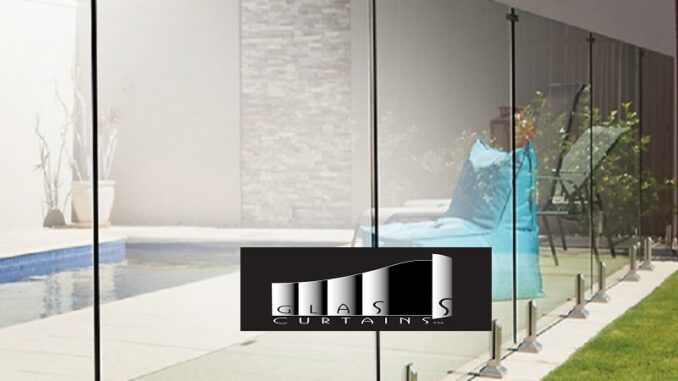
Sliding folding doors, also known as bi-fold doors, are an innovative architectural feature that has seen significant popularity in modern building designs. These doors consist of several panels, which are hinged together and run along a track system. This allows them to slide and fold simultaneously, page tinbinhduong.top share creating a flexible partition between spaces. The key components of sliding folding doors include the door panels, tracks, hinges, and locking mechanisms. Each element plays a substantial role in ensuring the smooth operation and durability of the doors.
Introduction to Sliding Folding Doors: A Comprehensive Guide
The functionality of sliding folding doors offers numerous advantages. One of the most notable benefits is their space-saving capability. Unlike traditional swing doors, which require a wide arc of space, sliding folding doors open horizontally, making them ideal for rooms where maximizing floor space is essential. Additionally, their ability to fold away neatly means they can create large, unobstructed openings, perfect for areas leading to patios or gardens.
Another advantage is their aesthetic appeal. Sliding folding doors can enhance the visual continuity between indoor and outdoor spaces, creating a seamless flow. They are available in various materials and finishes, from sleek aluminum frames to classic wooden designs, allowing them to complement diverse architectural styles. Their modern design can also contribute to the overall value of a property.
In the context of the Philippines, the importance of sliding folding doors increases due to the tropical climate. These doors allow for better ventilation and natural light, making spaces feel more open and airy. They provide an excellent solution for homes and businesses looking to integrate outdoor and indoor living areas, aligning with the local architectural preference for open spaces. This makes sliding folding doors not only a stylish choice but also a practical one for many Filipino households.
Historical Background and Popularity in the Philippines
Sliding folding doors have a rich history in the Philippines, deeply rooted in traditional Filipino architecture. Historically, these doors, often referred to as “folding glass doors” or “bi-fold doors,” were commonly utilized in ancestral houses, known as “bahay na bato.” These massive, colonial-era residences integrated sliding folding doors to seamlessly connect interior living spaces with the “azotea,” an elevated catchment space for social gatherings or simply to enjoy the tropical climate. Enhanced air flow and increased natural light were significant advantages, aligning perfectly with the architectural ethos of optimizing comfort in the tropical environment.
Over time, the popularity of sliding folding doors has evolved. During the post-war period, when urbanization took hold and modern building materials became more accessible, sliding folding doors found renewed applications in residential, commercial, and even industrial structures. Modern sliding folding door systems, incorporating advanced materials like tempered glass, aluminum, and high-quality timber, offer robust durability while maintaining the aesthetic appeal that complements contemporary architectural design.
Renewed interest in the integration of indoor and outdoor spaces has significantly influenced the modern adaptation of GlassCurtains doors in the Philippines. Incorporating elements that balance traditional architectural sensibilities with modern needs has driven the consistent increase in demand for these versatile door systems. Builders and homeowners alike appreciate their aesthetic flexibility, allowing spaces to adapt fluidly to varying social or functional requirements.
Cultural influences also play a pivotal role in the sustained popularity of sliding folding doors. The Filipino emphasis on “bayanihan,” fostering community and collective gatherings, aligns well with this architectural choice, which inherently promotes open, communal spaces. Current market trends reflect an increase in urban developments that prioritize space optimization, natural light, and energy efficiency, all of which sliding folding doors facilitate effectively.
With improvements in technology and design, sliding folding doors will likely continue to be a staple in Philippine architecture, balancing tradition and modernity seamlessly to meet evolving lifestyle needs.
Types of Sliding Folding Doors
Sliding folding doors, also known as bi-fold doors, are a versatile and stylish addition to both residential and commercial properties in the Philippines. They come in various types, differentiated by materials, design styles, and functional uses. Understanding these differences can help you select the most suitable option for your specific needs.
Materials
Sliding folding doors can be made from several types of materials, each offering unique aesthetics and functionality:
Wood:
Wooden sliding folding doors provide a classic and timeless look that blends seamlessly with various architectural styles. They are durable and offer excellent insulation, making them ideal for both interior and exterior applications. However, wooden doors require regular maintenance to protect against warping and termite infestations.
Aluminum:
Aluminum sliding folding doors are known for their strength and durability. They are lightweight, corrosion-resistant, and require minimal maintenance. Additionally, aluminum can be powder-coated in a range of colors to match your interior or exterior decor. On the downside, Glass Curtain aluminum is a poor insulator compared to wood, potentially leading to higher energy costs.
Glass:
Glass sliding folding doors add a modern touch to any space, allowing natural light to flood interiors and offering unobstructed views. They are often used as interior partitions or exterior doors leading to patios or gardens. While glass doors are easy to clean and maintain, they can be fragile and susceptible to breakage. For added safety and thermal efficiency, opting for double-glazed or tempered glass is advisable.
Design Styles
Design styles for sliding folding doors include:
Bi-Fold:
Bi-fold doors consist of two panels that fold against each other when opened. They are ideal for creating wide openings and are commonly used as exterior doors or room dividers. The primary advantage of bi-fold doors is their space-saving capability, although they may require more maintenance due to their multiple hinges and tracks.
Read more: Frameless Sliding Folding System Cambodia should know
Multi-Fold:
Multi-fold doors, also known as accordion doors, feature several panels that fold in a concertina manner. They offer greater flexibility in terms of opening width and can be used for larger spaces. Multi-fold doors are often preferred for commercial spaces due to their versatility but can be more complex to install and maintain.

Để lại một phản hồi